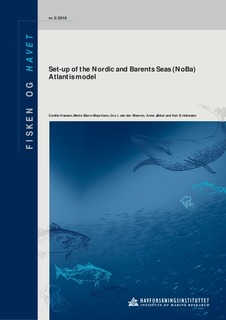| dc.description.abstract | End-to-end models are important tools when moving towards an ecosystem based approach to fisheries management. Atlantis is one such end-to-end model. Atlantis has been developed forseveral areas, including Australia, U.S., and European waters, and models for other areas are under development, The models give unique opportunities to explore spatial impact of climate and fisheries, and includes all levels from physical forcing to top predators in the system, including bacteria, phytoplankton, zooplankton, fish, benthos and marine mammals. Atlantis for the Nordic and Barents Seas (NoBa) has been built with the aim of representing the key species and processes in the areas, where the main objective is to explore combined climate and fisheries scenarios. In setting up the model several thousand parameters need to be defined This report provides an overview and explanations of key parameters used to initialize the model. | nb_NO |
